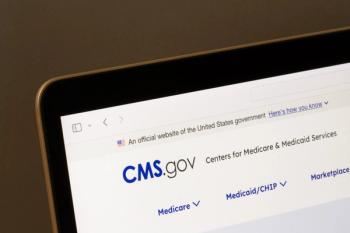
AMA Urges Policymakers to Act Despite Report of Improved Opioid Epidemic
AMA released its 2024 Overdose Epidemic Report and presented key findings from the past year.
Despite promising advancements recently in the US opioid epidemic—namely decreased overdose mortality and lower rates of opioid prescriptions—the American Medical Association (AMA) continues to call for “urgent action” necessary to address the ongoing patient challenges that accompany this public health crisis.1
According to AMA’s 2024 Overdose Epidemic Report, naloxone is being dispensed more often, prescription drug monitoring programs have increased, opioid prescriptions have decreased, and the number of buprenorphine prescriptions dispensed is currently plateauing. But despite seeing efforts to combat the opioid crisis finally come into fruition, the AMA is pressuring policymakers to strive for an end to this epidemic before it has the chance to worsen.
“Half-measures and outdated policies are costing lives, and we urge policymakers to act. With thousands of families and communities devastated by overdose deaths, the time for incremental change has passed. We need unwavering commitment to expand access to lifesaving medications, enforce parity laws, and address the glaring gaps in harm reduction,” said Bobby Mukkamala, MD, AMA president-elect and chair of the AMA Substance Use and Pain Care Task Force.1
READ MORE:
Before addressing what needs to be done in the future to advance the fight against opioid use disorder (OUD) and the epidemic as a whole, the public should understand that efforts to combat the crisis in recent years have not gone unnoticed, according to AMA data.
First, the total amount of opioid prescriptions has decreased by over 50% since 2012, with state-level decreases ranging between 36% and 68% for the same time period. Regarding state prescription drug monitoring programs, they were used a total of 1.4 billion times in 2023, an increase from just 61 million times in 2014.
For OUD-related products specifically, naloxone prescriptions increased by over 1.5 million from 2018 to 2023. And finally, retail pharmacy chains have experienced a plateau in the dispensing of buprenorphine, which the AMA said is “likely due to a variety of factors including longer prescriptions, pharmacy reluctance to stock the medication, and confusion/fear over DEA suspicious order requirements.”1
From the Controlled Substances Act in the 1970s to Purdue Pharma’s marketing of oxycontin as a less-addictive pain therapy, feelings toward opioids have been mixed throughout history as the general public is reminded of the millions of patients who have spent years struggling with OUD, while simultaneously trying to treat chronic pain.2 In the 21st century, however, the public is not as sympathetic to those with OUD.
“Public stigma…is very high toward individuals with [OUD]. Public stigma is a barrier to implementation of evidence-based policies and program to address the opioid crisis,” according to the Johns Hopkins Bloomberg School of Public Health.3 The university’s data also showed that 78% of Americans think people with OUD should blame themselves for their complications, while 72% of Americans believe people with OUD lack self-discipline.
According to the AMA’s report, promising trends that support the end of the opioid epidemic and advancement in OUD treatment are just small steps in finally ridding the country of its record-breaking number of overdose deaths. “We cannot stand by as outdated policies and insurance barriers prevent patients from accessing evidence-based care,” continued Mukkamala.1
As an organization representative of physicians and medical students in the US, the AMA is continuously urging its members to put patient outcomes first and focus on properly educating them as often as possible. But as a lobbying group for physicians as well, they provided policymakers with federal- and state-level actions AMA thinks are necessary to quickly address the threat of the opioid epidemic.
Among other things, the AMA called for “increased access to medications for [OUD] through efforts such as removing outdated prior authorization dosage requirements for buprenorphine, authorizing methadone to be prescribed outside of Opioid Treatment Program settings, and having the DEA remove buprenorphine from its suspicious order reporting requirements until further notice.”1
The opioid public health crisis has become a mainstay in the US for more than 25 years. While millions are fighting to stop it, and millions more are fighting to stay alive, stigmatization and other nonpartisan efforts have stunted the US government from putting its best foot forward in stopping this epidemic. But in the meantime, the AMA’s efforts seem like they will not slow down anytime soon.
“The AMA, our Substance Use and Pain Care Task Force, and the nation's physicians continue to urge policymakers, health insurance companies, and other payers to once and for all remove barriers to evidence-based treatment for substance use disorders, pain care, and harm reduction initiatives. Delays or denials of this care only results in increased suffering and death. Ending the epidemic is possible, but much more work must be done,” concluded AMA president-elect Mukkamala.1
READ MORE:
Ready to impress your pharmacy colleagues with the latest drug information, industry trends, and patient care tips? Sign up today for our
References
1. New report calls for urgent action to combat overdose epidemic. News Release. AMA. November 21, 2024. Accessed December 3, 2024. https://www.ama-assn.org/press-center/press-releases/new-report-calls-urgent-action-combat-overdose-epidemic
2. The origin and causes of the opioid epidemic. Georgetown Behavioral Health Institute. August 14, 2018. Accessed December 3, 2024. https://www.georgetownbehavioral.com/blog/origin-and-causes-of-opioid-epidemic
3. Guiding principles for addressing the stigma on opioid addiction. Johns Hopkins Bloomberg School of Public Health. December 5, 2019. Accessed December 3, 2024. https://americanhealth.jhu.edu/news/guiding-principles-addressing-stigma-opioid-addiction
Newsletter
Pharmacy practice is always changing. Stay ahead of the curve with the Drug Topics newsletter and get the latest drug information, industry trends, and patient care tips.





















































































































































